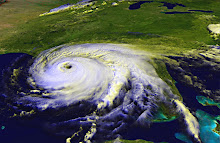You can also store tap water in sealed containers, if you know that a disaster is about to befall your community.
If you don't have time to stock up on water or if the disaster is sudden, you may need to purify the water that you have on hand. Perhaps it's trickling in to your faucet through damaged lines, so it may be contaminated. Maybe you're collecting rain water in a barrel, or you're just not sure how clean that game day Gatorade cooler was when you filled it up. In those cases, you can safely purify water yourself, with the right supplies.
This information is from the Washington State Health Department, who worked with theEmergency Management Division of the Washington State Military Department to put it this together.
These are tips to use when the only water available to you may be contaminated by bacteria or viruses. These techniques will not protect you if the water is unsafe because of chemicals, oils, poisonous substances, sewage or other contaminants. In those cases, do NOT use the water for drinking.
Storing water safely
- Store one gallon of water per person per day.
- Store at least a three-day supply of water per person.
- Collect the water from a safe supply.
- Thoroughly washed plastic containers such as soft drink bottles are best. You can also purchase food-grade plastic buckets or drums.
- Seal water containers tightly, label with date, and store in a cool, dark place.
- Replace water every six months.
- Never reuse a container that contained toxic materials such as pesticides, solvents, chemicals, oil or antifreeze.
Water purification
There are two primary ways to treat water: boiling and adding bleach. If tap water is unsafe because of water contamination (from floods, streams or lakes), boiling is the best method.- Cloudy water should be filtered before boiling or adding bleach.
- Filter water using coffee filters, paper towels, cheese cloth or a cotton plug in a funnel.
Boiling
- Boiling is the safest way to purify water.
- Bring the water to a rolling boil for one minute.
- Let the water cool before drinking.
Purifying by adding liquid chlorine bleach
- If boiling is not possible, treat water by adding liquid household bleach, such as Clorox or Purex. Household bleach is typically between 5 percent and 6 percent chlorine. Avoid using bleaches that contain perfumes, dyes and other additives. Be sure to read the label.
- Place the water (filtered, if necessary) in a clean container. Add the amount of bleach according to the table below.
- Mix thoroughly and allow to stand for at least 30 minutes before using (60 minutes if the water is cloudy or very cold).
Treating Water with a 5-6 Percent Liquid Chlorine Bleach Solution |
||
| Volume of Water to be Treated | Treating Clear/Cloudy Water: Bleach Solution to Add |
Treating Cloudy, Very Cold, or Surface Water: Bleach Solution to Add |
| 1 quart/1 liter | 3 drops | 5 drops |
| 1/2 gallon/2 quarts/2 liters | 5 drops | 10 drops |
| 1 gallon | 1/8 teaspoon | 1/4 teaspoon |
| 5 gallons | 1/2 teaspoon | 1 teaspoon |
| 10 gallons | 1 teaspoon | 2 teaspoons |










